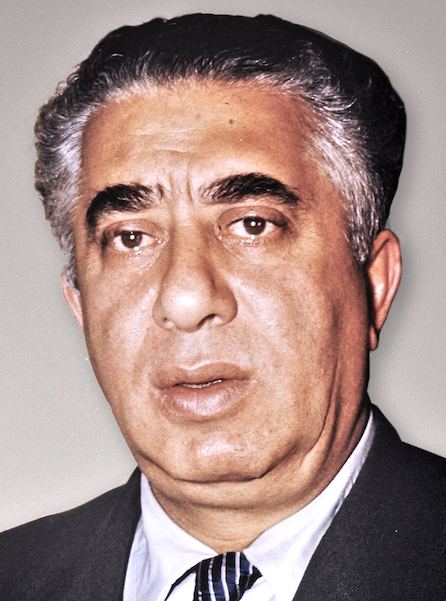On this date in 1903, composer Aram Ilyich Khachaturian was born in Tiflis (now Tbilisi), the capital of Georgia, the youngest of the five children of Kumash Sarkisovna and Yeghia Khachaturian, both of Armenian descent. His parents were betrothed when his mother was 9 and his father, later a bookbinder, was 19.
Khachaturian, along with Dmitri Shostakovich and Sergei Prokofiev, is generally considered one of the three greatest composers of the Soviet era in Russia and the other republics. He studied at the Gnessin Musical Institute (while simultaneously studying biology at Moscow State University) and became proficient in composition and orchestration at the Moscow Conservatory.
His first major work, the Piano Concerto in D-flat major (1936), popularized his name inside and outside the Soviet Union as did his later concertos for violin and cello. Other significant compositions included the “Masquerade Suite” (1941), the “Anthem of the Armenian SSR” (1944), three symphonies (1935, 1943, 1947) and about 25 film scores.
Khachaturian is known for his ballet music: “Happiness” (1939), “Gayane” (1942), which was his wife’s nickname, and “Spartacus” (1954). “Sabre Dance” from “Gayane” is his best-known work. He married composer Nina Vladimirovna Makarova, a fellow student at the Moscow Conservatory, in 1933. They had a son, Karen, and daughter, Nune.
After 1950 he taught at the Gnessin Institute and the Moscow Conservatory and turned to conducting, traveling throughout Europe, Latin America and the U.S. with concerts of his own music. In 1957 he became secretary of the Union of Soviet Composers, a position he held until his death.
Khachaturian used Armenian and, to a lesser extent, Caucasian, Eastern and Central European and Middle Eastern folk music in his works. He is considered a “national treasure” in Armenia. “Besides his being an atheist, his Armenian descent grated against the patriotism and chauvinism of the Euphratians,” Leo Hamalian wrote in 1980 in “As Others See Us: The Armenian Image in Literature.”
He died just short of his 75th birthday after a long illness, two years after his wife’s death. D. 1978.


